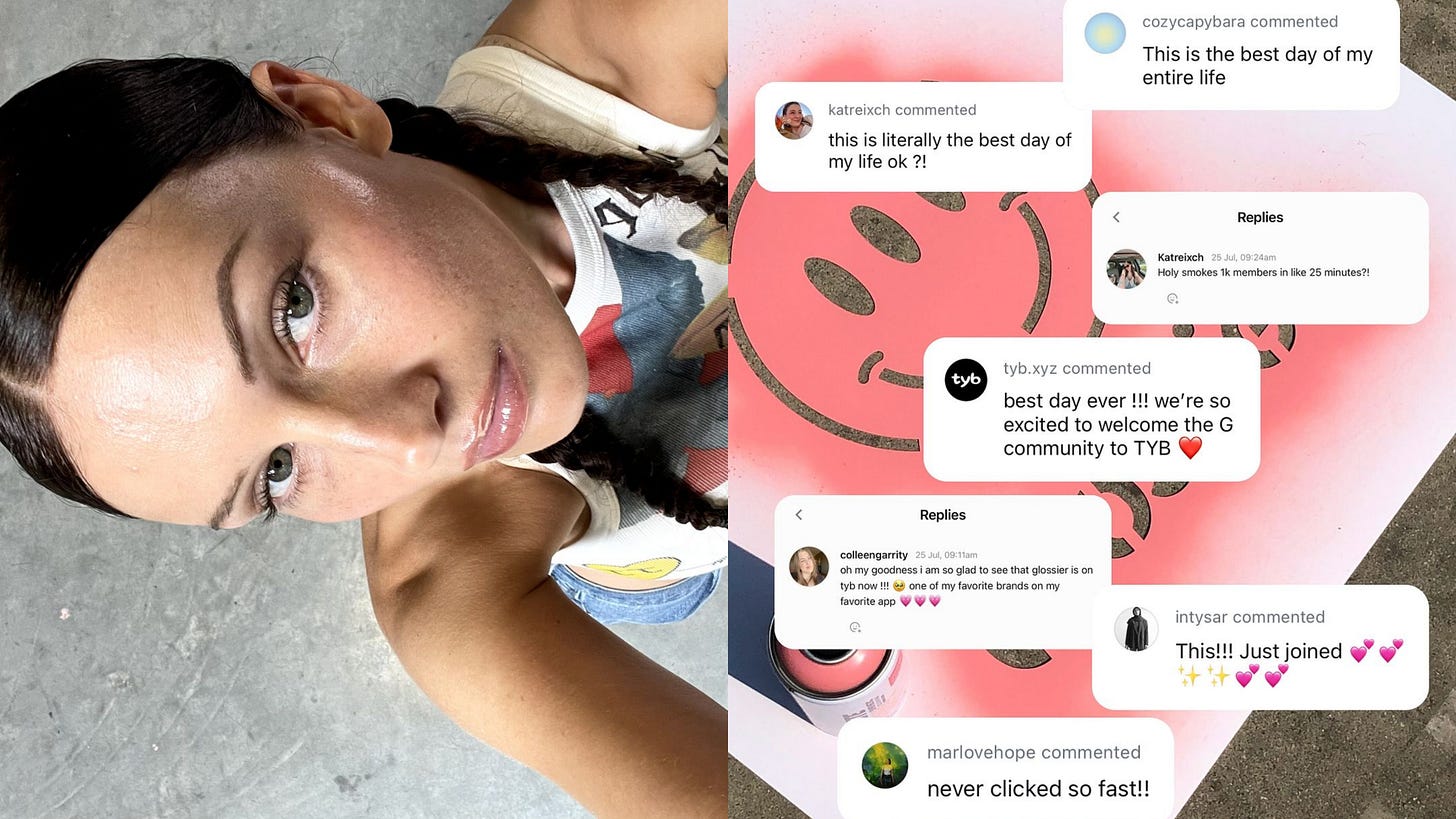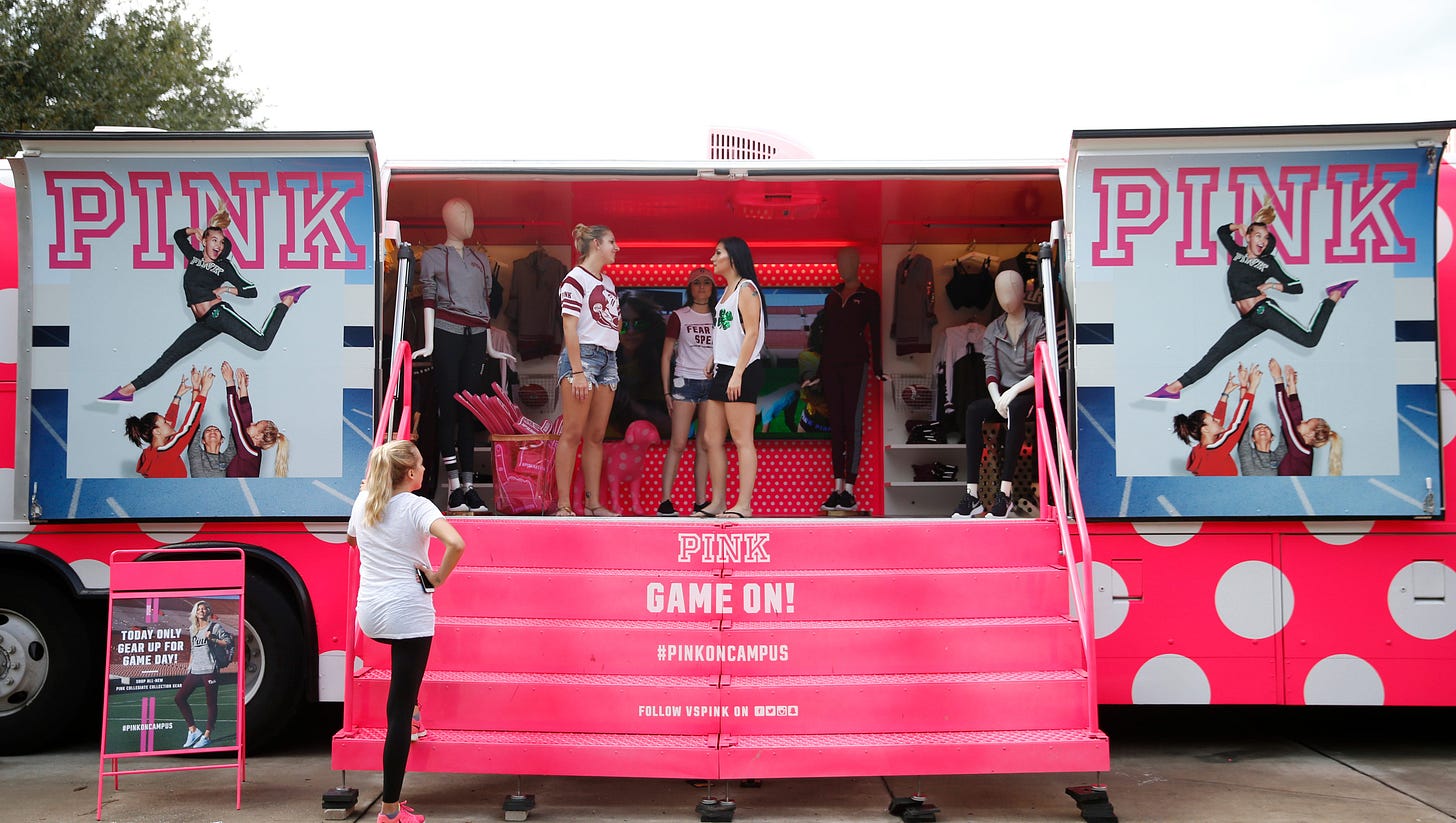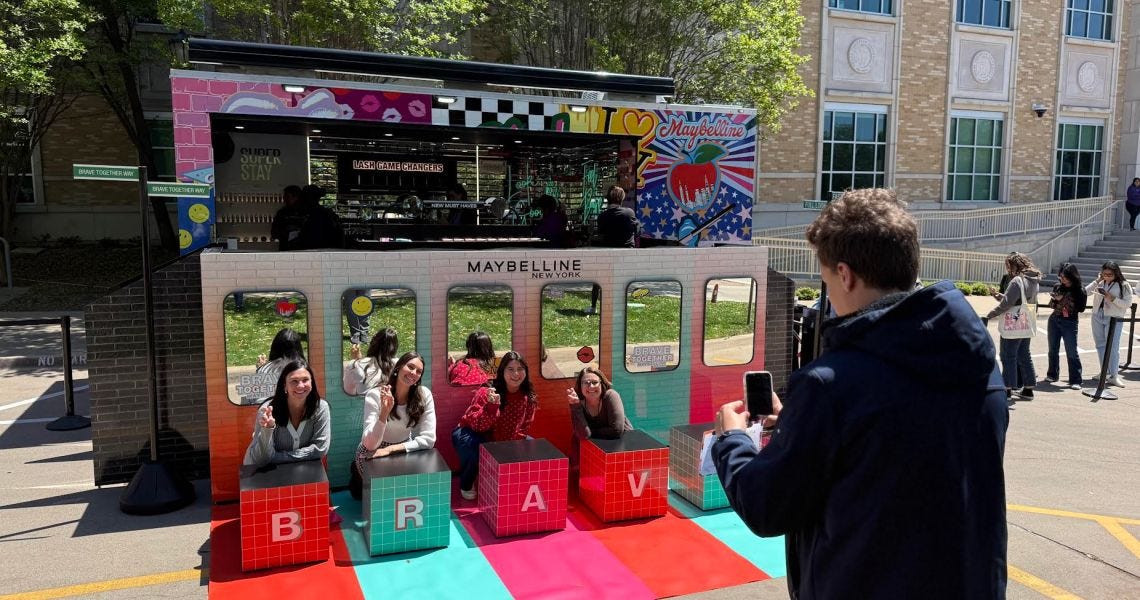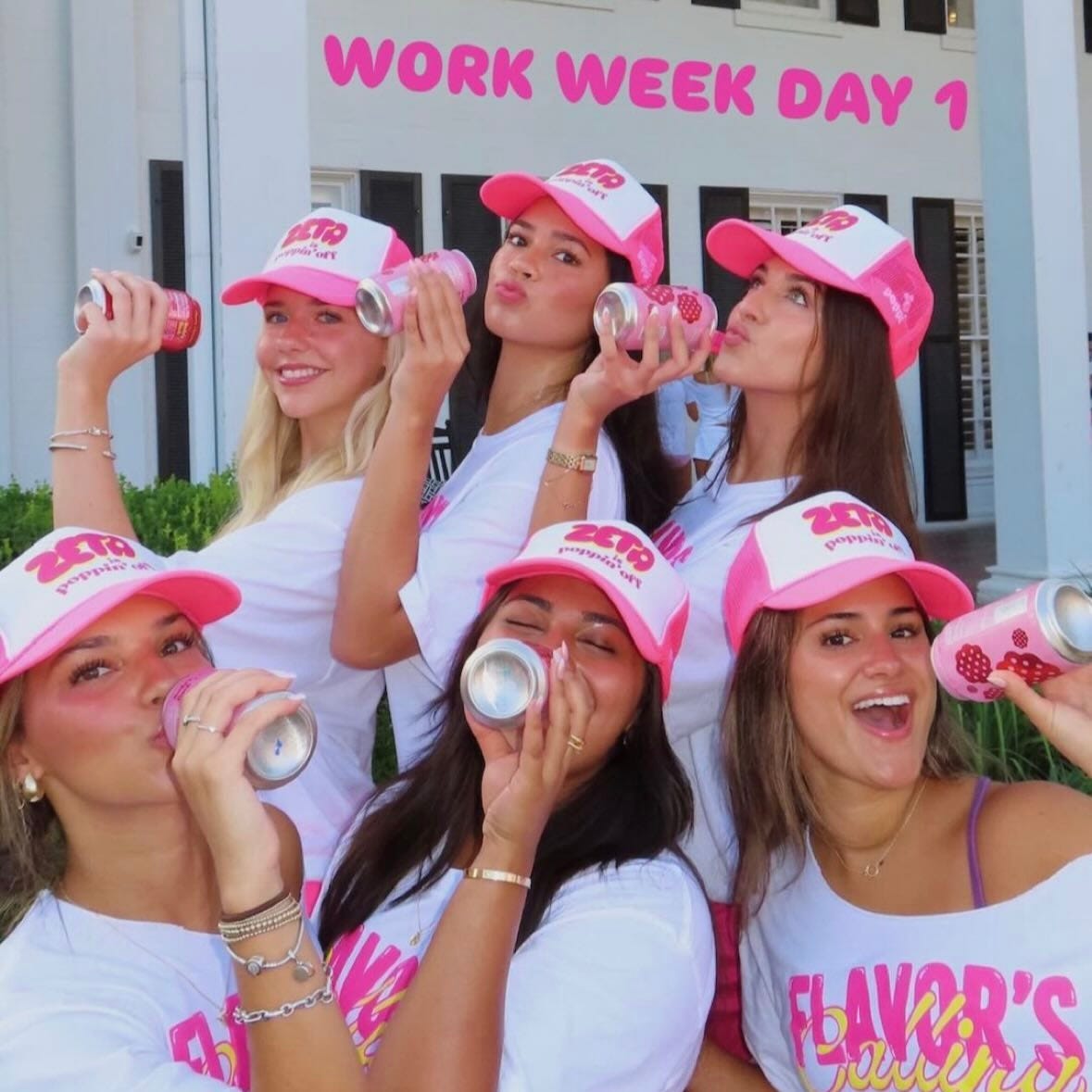“Community” is having a brand moment.
It’s the answer to every brief. The fix for declining engagement. The thing you’re supposed to build if you want retention, loyalty, referrals, and love. Scroll LinkedIn or skim a brand deck and you’ll see it: community as moat, community as movement, community as marketing channel. TYB, Geneva, Discord, IRL pop-ups: every brand wants to have and host one. But the truth is, most brand communities aren’t communities at all. They’re just customer lists with a coat of gloss, Slack groups that die after launch, and at best: fan fiction written by marketers. We’ve confused coordination with care, and presence with participation. And we’ve convinced ourselves that if people show up, it must mean they belong.
The rise of “community-led” brands was meant to challenge the old model: top-down, transactional, ad-driven. And in some ways, it has. We’ve seen incredible examples of participatory models, places where people don’t just buy in, they build with. However, the popularity of the term has also made it easier to misuse. Every brand wants to say they’re community-driven now. Few are willing to admit that they’re just broadcasting with better manners.
That’s the problem. “Community” has become a shield used to justify vague strategies, sentimental copy, and low-lift engagement efforts. It’s become a way to gesture at intimacy without delivering on it and to claim moral high ground without accountability. In too many cases, community is less of a reality and more of a branding affect, something you perform, not maintain.
I recruited the queen of community, Sara Wilson, to help dispel some common myths about what it really takes to build authentic community.
Sara pioneered the concept of "digital campfires" in her 2020 Harvard Business Review piece, identifying how younger audiences were shifting toward more intimate online spaces like Discord and away from the "crowded airport terminal" of traditional social media.
What follows is our collaborative community myth-busting guide: the first five from me, followed by five from Sara.
Nikita’s Five Myths of Community
MYTH 1: Community can’t be faked.
The truth is…it’s faked all the time. The performance of community has become a brand playbook: launch a Discord, seed a few UGC posts, write copy that says “we” instead of “you.” The illusion is easy to stage. But just because a brand acts like it has a community doesn’t mean it’s built one. The difference is structural. Real communities aren’t just audiences who show up—they’re networks with their norms, rituals, and internal logic. They’re resilient because they’re not reliant on the brand to exist.
MYTH 2: You have to do things that don’t scale.
This phrase gets repeated like gospel (originally from an article by Paul Graham in 2013!). But it’s only half the truth. Yes, early community-building often requires hand-to-hand relationship work. But that’s not a full-on strategy, merely a stage of the process. What gets missed is the infrastructure that has to follow: the systems, guardrails, and scaffolding that allow something to grow without losing coherence. Brands love the romanticism of unscalable effort, but skip the boring operational reality of what comes next. As a community scales, a lack of planning for scale means there is a lack of durability.
MYTH 3: Every brand needs a community.
Not every consumer wants to be in a community. People are maxed out. They don’t want to join ten more Discords, RSVP to every brand activation, or scroll through another half-dead members-only feed. Sometimes they just want a product that works, a service that delivers, a brand that leaves them alone. Most brands don’t have the values, stamina, or structural commitment required to sustain real communities, and most people don’t have the appetite to be in yet another one, and certainly not one that is just throwing a few discounts at them. Not every brand needs a community. And more importantly, not every brand has earned the right of play to have one.
MYTH 4: Words like authenticity and belonging still mean something.
These words still get you nods in some rooms, but they’ve been rinsed of meaning through overuse. “Authenticity” is now a brand tone (which brand wouldn’t want to be authentic?). “Belonging” has been reduced to a deck slide with cleverly-chosen imagery that obfuscates the reality. These aren’t bad words, but they’re not enough. Community isn’t created through value statements, it’s enforced through norms, behavior, and structure. If you’re not creating systems of accountability, you’re not offering belonging. You’re offering brand theater.
MYTH 5: A great community builds your brand.
The fantasy: build a community, and your most passionate users will become your best marketers. Organic growth, retention, cultural cachet: for free. But communities aren’t built to serve the brand. They emerge around shared meaning. And when you treat people like a marketing function, they notice. Real communities don’t exist to drive brand metrics. The moment your audience senses that’s what you’re after, they’ll stop giving you anything back.
Sara’s Five Myths of Community
Building on these insights, Sara has identified several additional myths that prevent brands from building what she calls “community-powered” relationships with their customers.
MYTH 6: Community is a “nice to have,” not a must.
Brands are operating in an increasingly chaotic and fractured consumer environment where trying to market to everyone is not only expensive, it’s nearly impossible. By building a community or tapping into an existing one, you’re effectively creating a relevance machine—and relevance drives results. The data confirms this: brands with high cultural relevance grow nearly six times more compared with brands that have low levels, according to a report from WARC x TikTok, and over the past decade, highly relevant brands have outpaced the S&P 500’s average revenue growth by 230% and EBIT growth by 1,040 percent, according to Prophet. Community isn’t simply another marketing option—it’s the strategic advantage that transforms casual customers into passionate brand advocates and drives sustainable business growth.
MYTH 7: One viral moment can build your community.
Magic in community building happens through sustained engagement rather than viral moments. Poppi, the prebiotic soda brand recently acquired by PepsiCo for $2 billion, proves this perfectly. Rather than chasing temporary trends, they built lasting relationships with sorority communities since 2023. Their college ambassador program created genuine campus connections that transformed regular customers into passionate advocates. By March 2024, “almost every single girl involved in Greek Life” at Cornell could name her favorite Poppi flavor—the result of consistent presence, not fleeting attention. Their community-powered strategy created the kind of defensible market position that ultimately led to their billion-dollar acquisition.
MYTH 8: The demographics of your audience tell you everything you need to know about them.
Most brands collect basic data (age, gender, location) but miss the rich tapestry of values, interests, behaviors, and passions—the core markers of personal identity that tell us much more about who their audience really is. Communities form around precisely these personal identity markers, which is why I call them PIPEs (personal identity ports of entry). Each community is a “port of entry” to a specific audience. When we look at something like BookTok or creator fandoms, what we’re seeing isn’t just content consumption—it’s often closer to identity expression. What makes this even more critical: you need to see your audience this way because Zs see themselves this way. Recent research from Horowitz and Vox Media confirms this: while 66% of Gen Z says society slaps demographic labels on them, 81% actually define themselves through passions, interests, and chosen communities.
MYTH 9: Online engagement is enough to build community.
Most brands limit themselves to digital-only community building, missing the powerful impact of in-person experiences. But research shows consumers increasingly seek spaces where they can drop the performance of social media and have real, vulnerable conversations. Cartier exemplified this by hosting an intimate poker game that created such authentic connection it triggered FOMO among cultural observers like
. This shift reflects what I call “the intimacy imperative”—a fundamental change where emotion instead of transaction must sit at the heart of brand relationships. In a world where consumers often view social media negatively, in-person creates unique opportunities to build meaningful relationships.MYTH 10: You can build a community without really knowing what you stand for or who you’re for.
Communities are built on shared belief systems—core values, principles, and values that unite people and give the community meaning. That means building your own community or showing up authentically in an existing one requires having a belief system of your own. Without this foundation, community efforts will feel hollow and inauthentic. The biggest mistake brands make? They don’t know what they stand for or specifically who they’re for. To build a community from scratch or embed in existing ones, you must first know these two core elements with crystal clarity. People join communities that reflect or enhance some aspect of their identity. If your brand is going to play in that space, your identity had better be airtight.
Before You Call It Community
These myths reveal a fundamental misunderstanding of what community truly means for brands. But there's a bigger truth at play here:
Brands want to be worshipped, not questioned. They want to say "we" without ever answering for it. But real communities don't exist to serve your KPIs. They're made of people with needs, norms, and networks of their own. And when you reduce that to a growth lever, you don't just cheapen the word—you break the trust required to make it meaningful.
If you say you're building community, then be honest about what that entails. Are you creating spaces for people to shape the brand with you, or are you just offering more places for them to consume it? Are you prepared to listen when they push back—or only when they praise? Are you designing systems that allow connection, or trying to script one?
Community isn't a tactic. It's a commitment. It demands infrastructure, not just intention. Responsibility, not just rhetoric. And care—the kind that isn't always visible, scalable, or convenient.
So if you're going to build one, start there. With care. And then prove it.
Here’s a quick gut check:
If you took the brand away, would people still want to talk to each other?
If the perks disappeared, would anyone stay?
If you stopped posting, would the community keep building itself?
If someone in the group said something uncomfortable, would it be addressed, or ignored?
If nothing ever got posted again, would anyone notice?
If the answer to most of these is no, you don’t have a community. You have a campaign with extra steps.
For brands ready to build genuine community-powered connections, Sara has developed two powerful tools:
The Community Catalyst system, which gives small to mid-size brands a clear roadmap for generating attention, relevance, and loyalty by tapping into existing communities, and the Audience Atlas, a report that reveals the micro-communities hidden within your brand’s current social audience, mapping trusted influencers, identity-based micro-communities, and delivering actionable strategies based on your audience's actual interests, values, and passions.
Sara is offering a special early-bird rate on the public launch of Audience Atlas to Thinking out Loud subscribers.
Sign up here to get special access: https://swprojects.co/audienceatlas/
Reach out to Sara at sara@swprojects.co or connect with Sara on LinkedIn to learn more.











"Are you creating spaces for people to shape the brand with you, or are you just offering more places for them to consume it?" You voiced my thoughts perfectly 🤌🏾😮💨💕
“Not every consumer wants to be in a community” this! And not every founder or creative wants to build one.